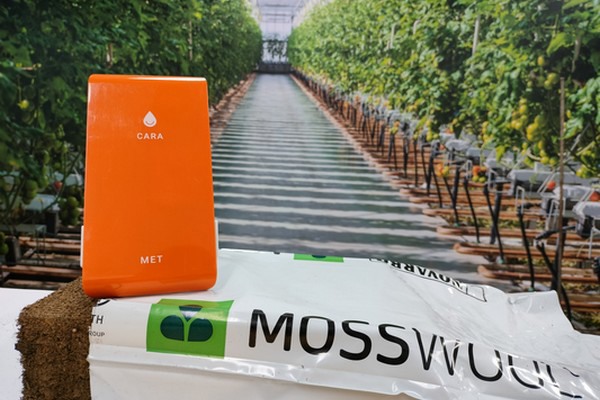To make the sensors as universal and independent of substrate manufacturers as possible, SenseNL developed a new algorithm earlier this year for use in MossWool. These mat substrates from Finnish company Novarbo consist of ecologically harvested sphagnum moss and offer a sustainable alternative to the commonly used rock wool substrates. Residual material can simply be composted along with the remnants of the crops after the growing period, resulting in less waste.

Both in-house and with knowledge and field lab partner Tomatoworld, SenseNL conducted measurements to develop a customized algorithm for accurate measurement in MossWool.
Winelis Kavelaars, SenseNL: "We notice that despite the organic and less structured nature of Novarbo's sphagnum moss substrates, the overall physical properties are stable and consistent enough that an algorithm can be developed for it. With this, the Cara Met sensors can perform accurate and reliable WC, EC, and temperature measurements just as in rock wool. We also notice from the market that such substrates are interesting, for example, we have understood from a contact in the US that rock wool substrates can cause extra costs because they need to be transported over long distances for processing after cultivation, where biodegradable substrates can be processed locally."
Currently, the algorithm is developed based on pure sphagnum moss. In the future, there is the possibility to make the algorithm also suitable for variants of this substrate with wood fibers. With this development, SenseNL is expanding its portfolio of supported substrates further. In addition to rock wool, potting soil, open ground, and coconut, MossWool will also be among the possibilities.
For more information:
SenseNL
Tel: +31 (0)85 876 8909
info@sensenl.com
www.caramet.com
